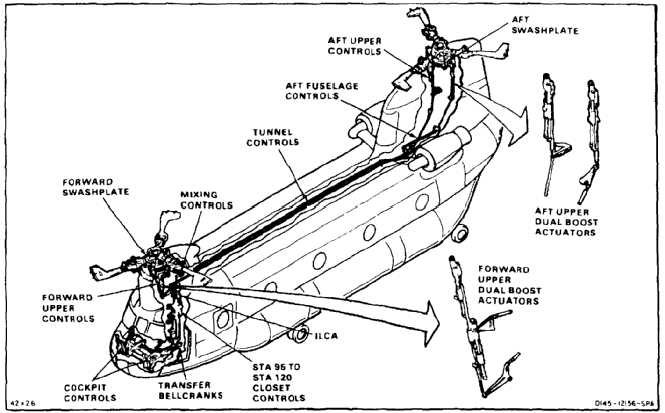TM 55-1520-240-23-9
11-1
FLIGHT CONTROLS
11-1
The flight control system is electrohydraulic operated and
powered by two independent hydraulic boost systems.
Control inputs from the cockpit are transmitted through
mechanical linkage to the integrated lower control
actuator (ILCA). The ILCA then transmits individual
control motions to the first and second stage mixing
units. The mixed outputs are then transmitted through
a series of push-pull tubes to the upper dual-boost
actuators attached to the forward and aft swashplates.
The helicopter is vertically controlled with the thrust
control lever, through application of equal pitch to
all blades. Directional control is obtained with the
directional (yaw) pedals by imparting equal but
opposite inputs to the forward and aft swashplates.
Lateral control is obtained with cyclic (roll) stick
by application of equal inputs left or right tilting
the swashplates causing both rotor discs to tilt
equally moving the helicopter either left or right.
The helicopter is longitudinally controlled with the cyclic
(pitch and roll) stick through application of differential
collective pitch. For forward motion, the pitch of the
forward rotor blades is decreased while the pitch of the
aft rotor blades is increased. The opposite action occurs
with aft movement of the helicopter. The helicopter
has an Advanced Flight Control System (AFCS) for
stabilization and coupled flight control operations.
The flight control system is divided into seven main
sections:
Cockpit controls
Closet controls between sta. 95 and 120
First and second stage mixing controls
Forward upper controls
Tunnel controls
Aft fuselage controls
Aft upper controls
11-2

